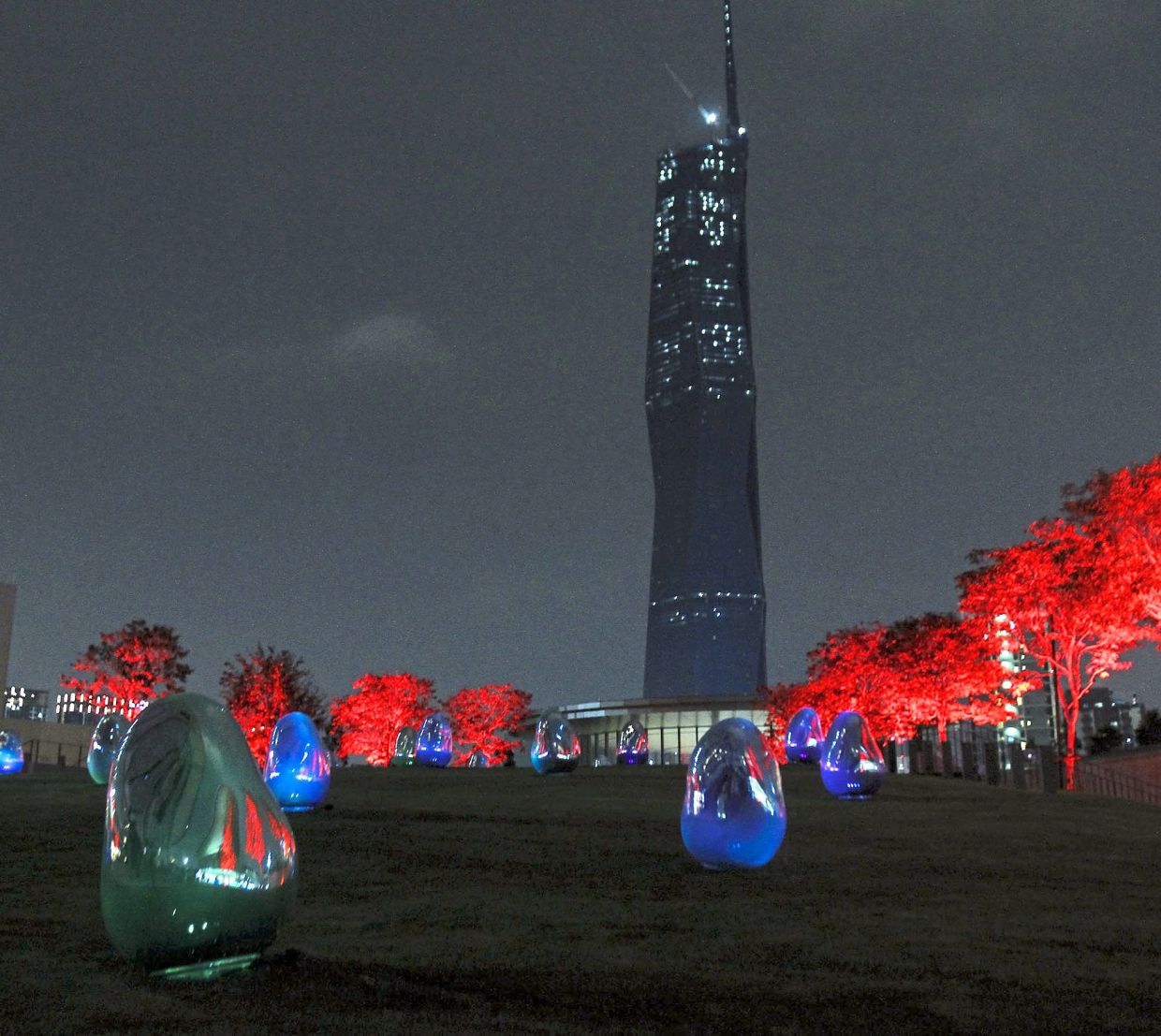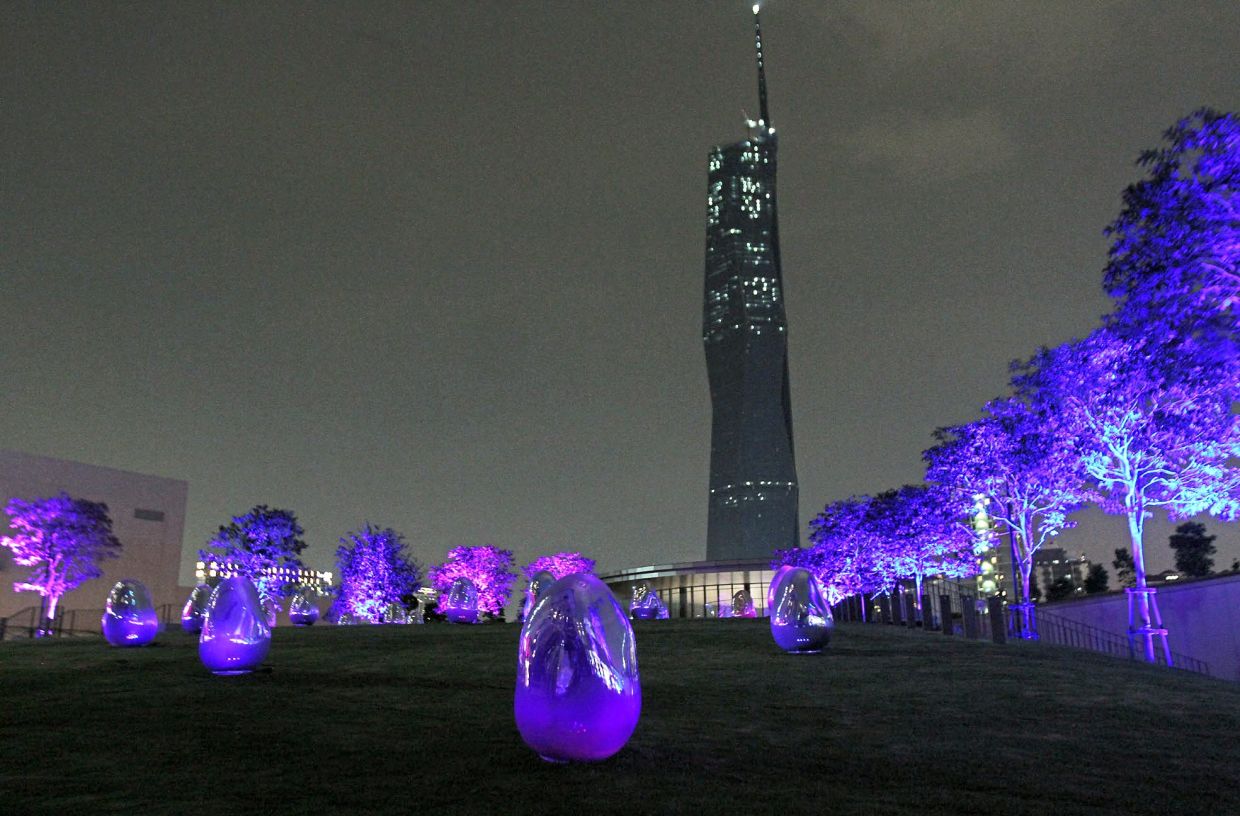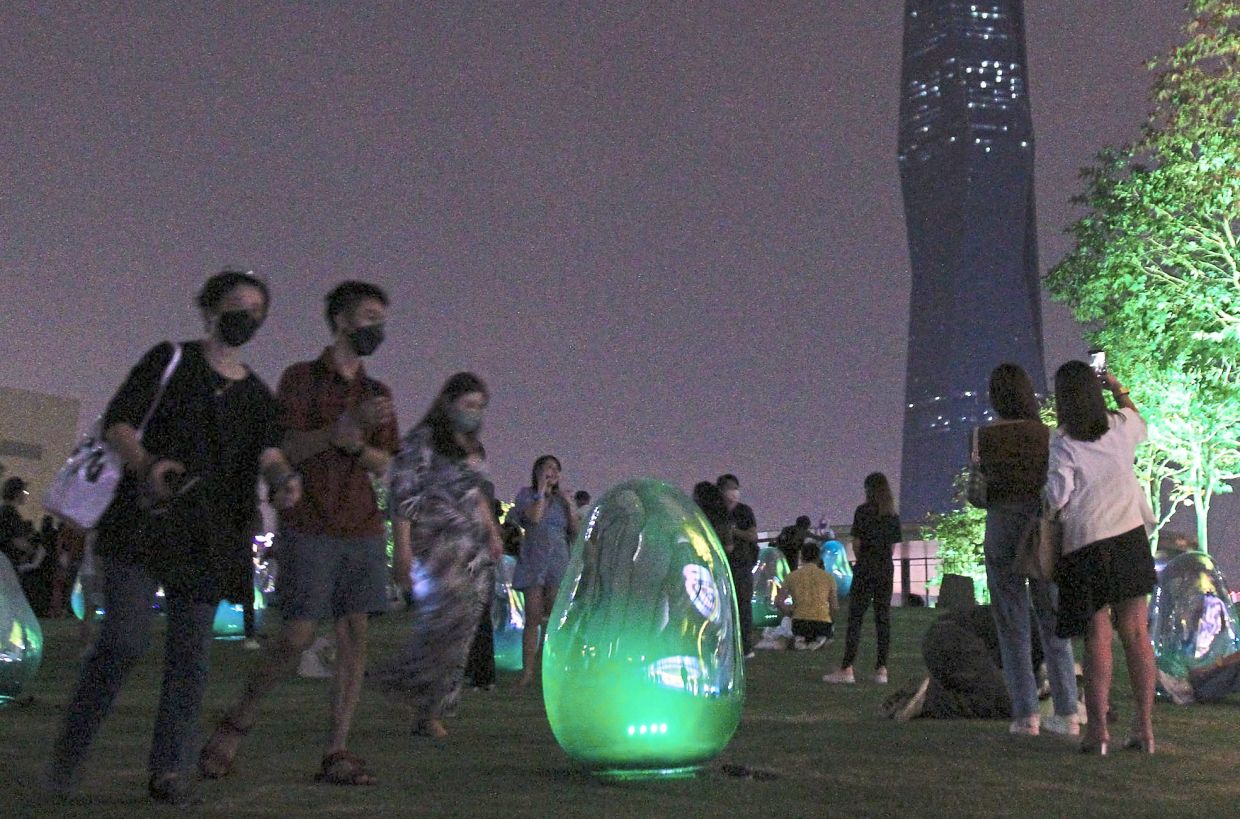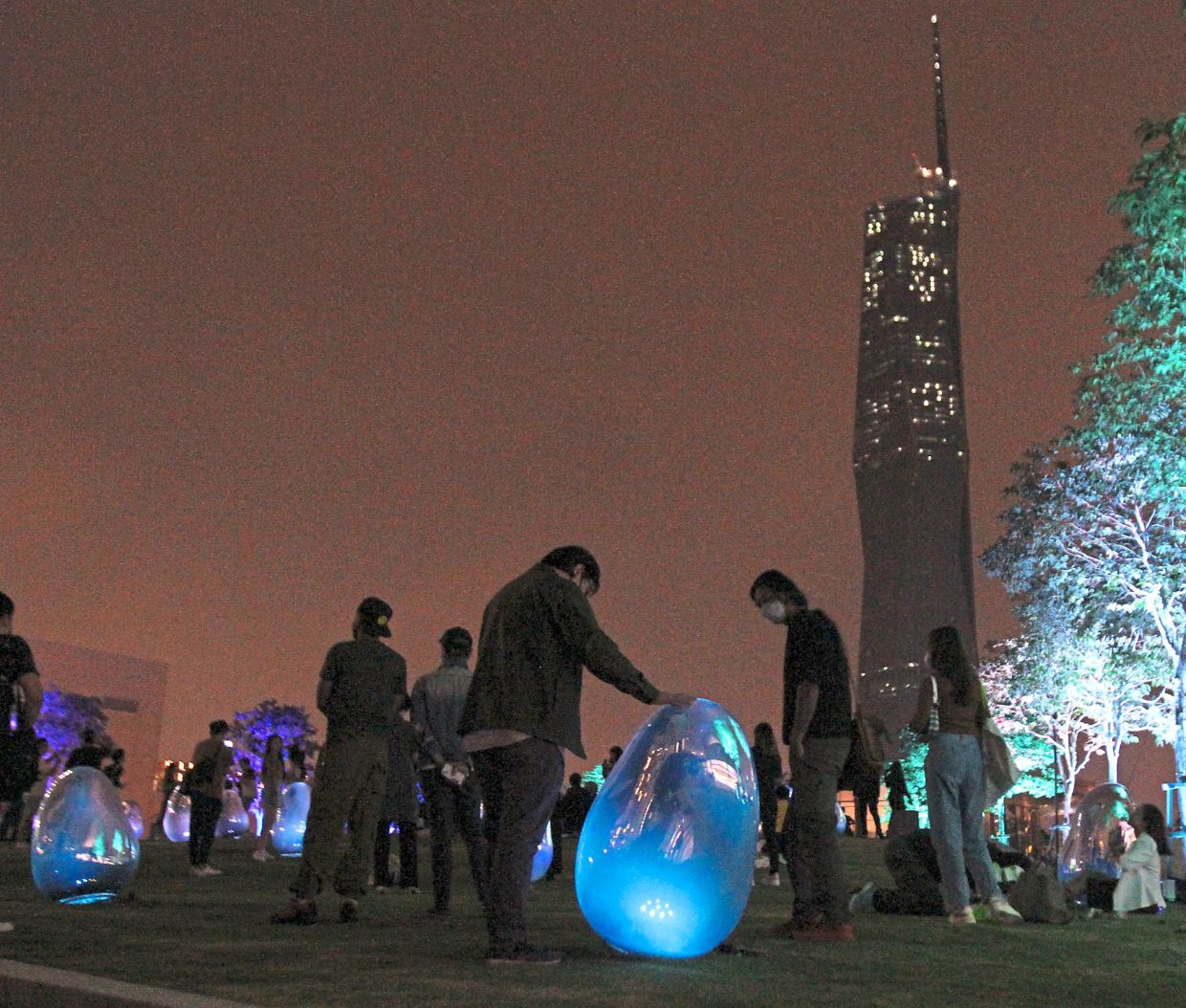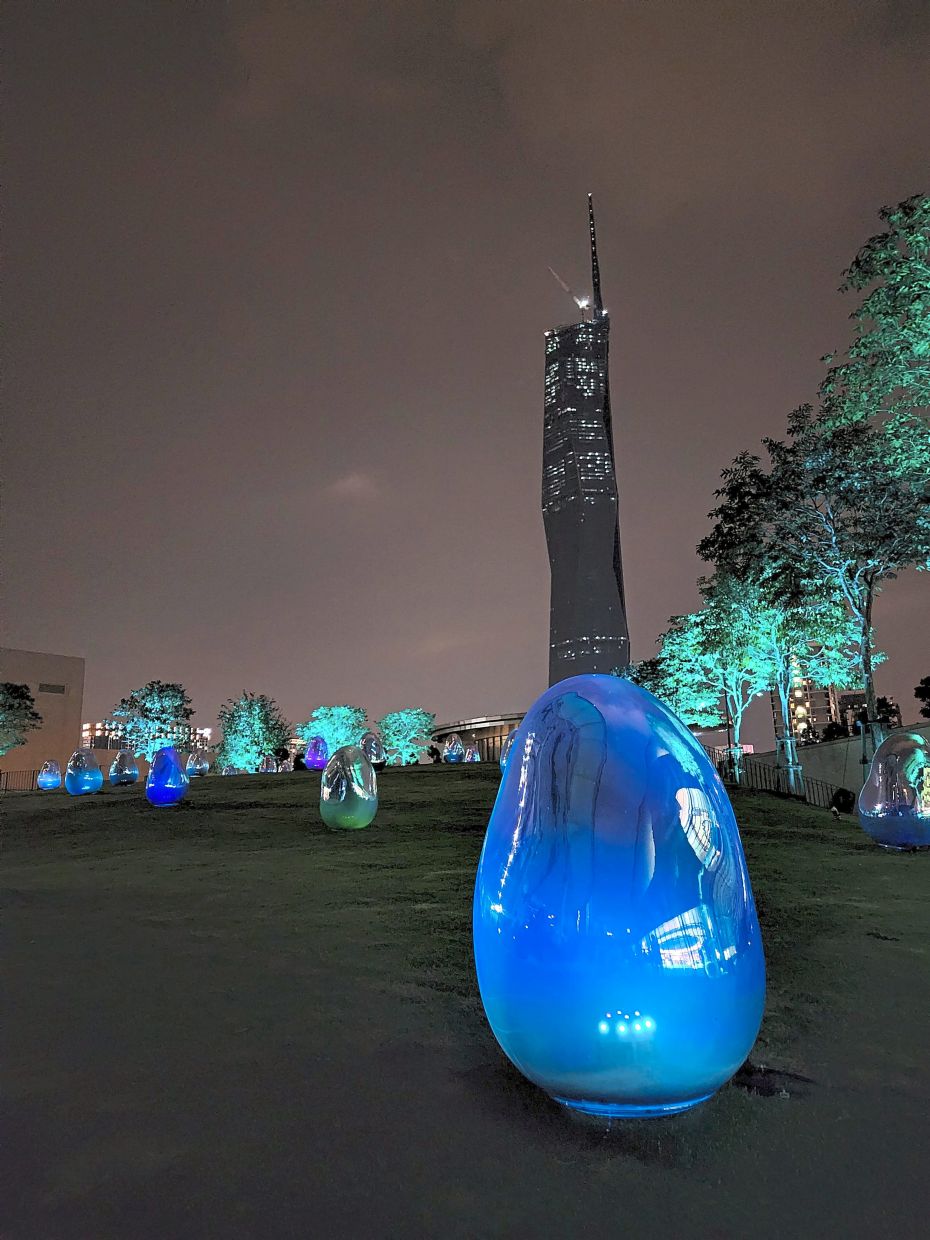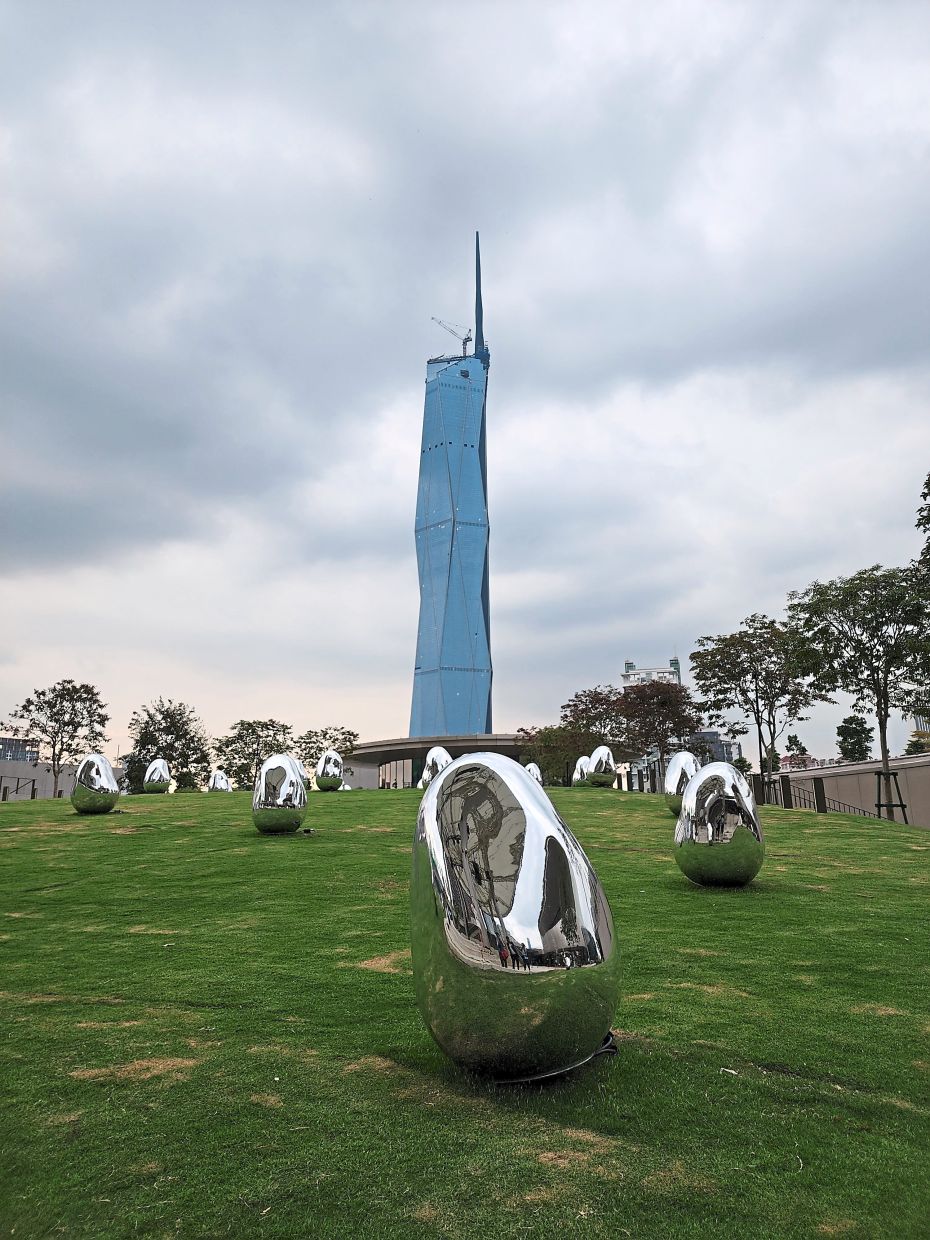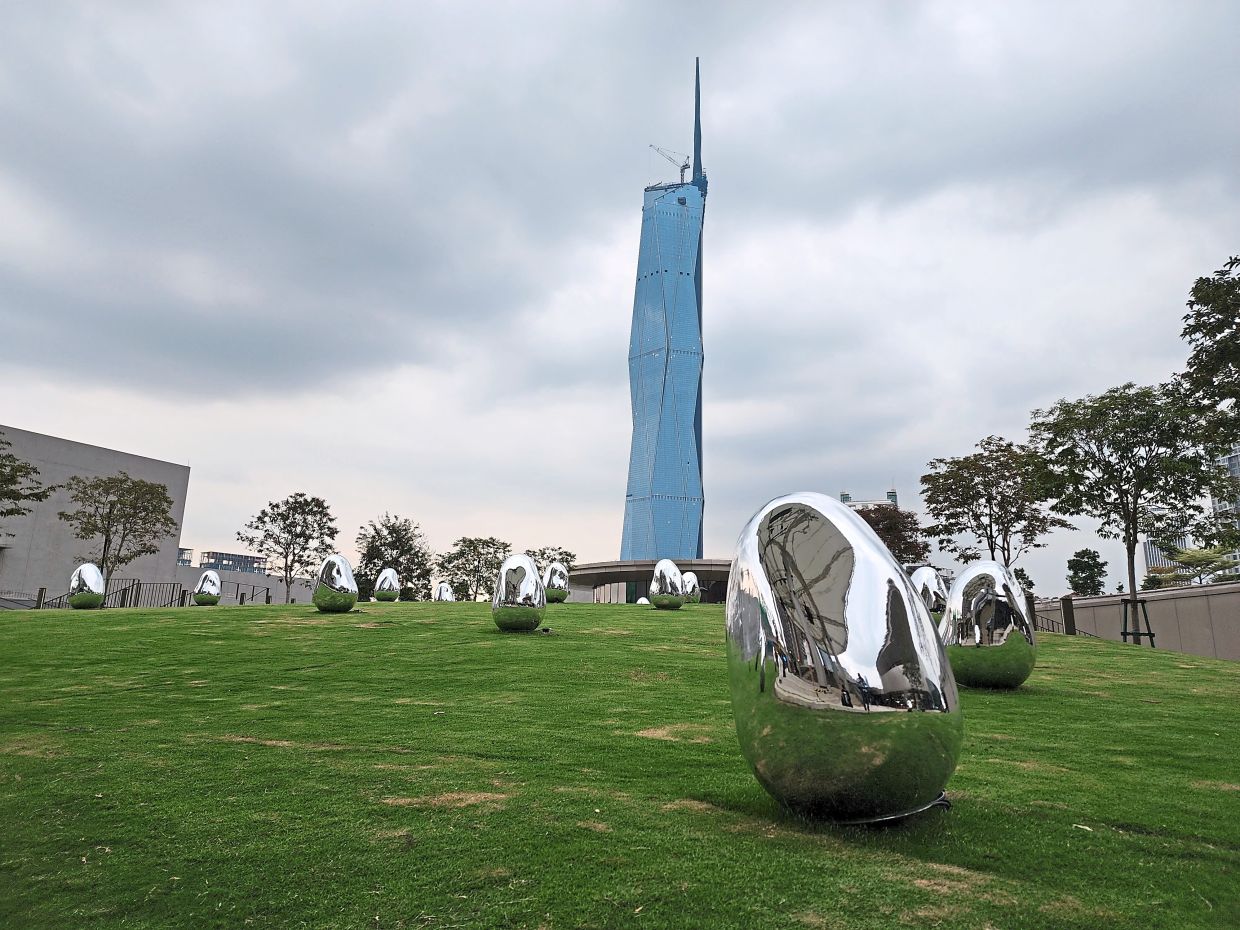When you touch an ovoid, the colour will change and it will emit a vibrating sound, which will affect the surrounding ovoids and trees. Photo: LaLaport BBCC
To add to its rich, immersive lifestyle shopping experience, Mitsui Shopping Park LaLaport BUKIT BINTANG CITY CENTRE (LaLaport BBCC) is bringing TeamLab’s Resonating Microcosms: Liquified Light Colour, Sunrise and Sunset art exhibition all the way from Japan to Malaysia. The free exhibition, available from Aug 4 to Nov 30 at LaLaport BBCC, offers two artworks: Resonating Microcosms and Resonating Trees, at its Central Rooftop Garden on level four.
Imagine a world where light, sound, colour and movement come together in a magical vibrating ecosystem. That’s what Resonating Microcosms: Liquified Light Colour, Sunrise and Sunset, is all about, says TeamLab team leader Ghani (Masato Takeuchi) from Japan.
According to Ghani, who came to Malaysia three weeks ago to work on the project, these artworks change during sunrise and sunset.
“By day, after the sun rises, it’s a mirror. The countless ovoids (egg-shaped objects) in the garden mirror life and their surroundings - whether it’s buildings, plants, or people and any objects or movement around,” he explains.
“By night, when the sun sets, it’s LED lights and sound. If you touch an ovoid, the sound resonates from the touched piece to the next until it becomes a magical vibrating symphony,” he adds.
“Our team created this art installation because we wanted to connect to the environment and the people within it,” says Ghani.
“So if you’re standing here next to this ovoid, and someone touches an ovoid over there, the colours of the ovoids will change and sound will be emitted, from there to where you are,” he says.
“It makes people become more aware of the existence of others in the same space. And we’ll know we’re not alone in this microcosmos (community or place that represents in miniature, the characteristics of something larger), we’re all in this together,” he adds.
Ghani says that TeamLab’s art installation is different from other artwork in that people are part of the artwork. Without the visitors, there isn’t any interaction nor movement and so, nothing happens.
“For example, if you’re at a museum or art gallery, such as the Louvre in France, and you want to take a picture with the Mona Lisa, you wouldn’t want any other people in the picture. Also, children can’t run around in a museum.
“But here in this garden, children can run, touch and play among the exhibits – it’s interactive. In fact, you want people around. The visitors are part of the exhibit, they are part of the art because when they touch and interact with it, it changes colour and emits sound,” he explains.
“Even if it’s wind, rain or an animal such as a bird, the movement may cause the ovoids to emit light and sound, and with each movement, the colours change,” he adds.
So, visitors are encouraged to go into the Central Rooftop Garden and touch the ovoids to “resonate the microcosmos”.
Each ovoid has speakers and sensors on it and is connected by a network. When you touch or push it, the colour will change and it will emit a vibrating sound, which will affect the surrounding ovoids and trees.
This project is an experimentation on colour and each piece comprises two colours interacting together. We have at least 57 colours in total and countless ovoids and trees in the outdoor rooftop garden, says Ghani.
The colour combinations are in a programmed sequence. They’re synchronised and connected digitally through the network but require touch and movement to activate, he says, adding that TeamLab started the Resonating Microcosmos project three years before.
The Japan-located art collective founded in 2001 comprises an international team of artists, programmers, engineers, CG animators, mathematicians, architects and other specialists working in collaboration to make each of the ovoids.
According to Ghani, they seek to navigate the “confluence or meeting place of art, science, technology, and the natural world”.
TeamLab has held many exhibitions worldwide, including in New York, London, Paris, Singapore, Silicon Valley, Beijing, Melbourne among others, as well as large-scale permanent exhibitions in Shanghai, Macao, Tokyo, and Singapore.
“As of today, we’ve welcomed over 28 million visitors to our art exhibitions worldwide,” says Ghani.
“TeamLab’s Borderless Museum in Tokyo saw 2.3 million visitors from over 160 different countries and regions in one year since its opening and was recognised as the world’s most visited single-art group museum. It was also named one of TIME Magazine’s World’s Greatest Places of 2019”, he adds.
More info available at: mitsui-shopping-park.com.my/










